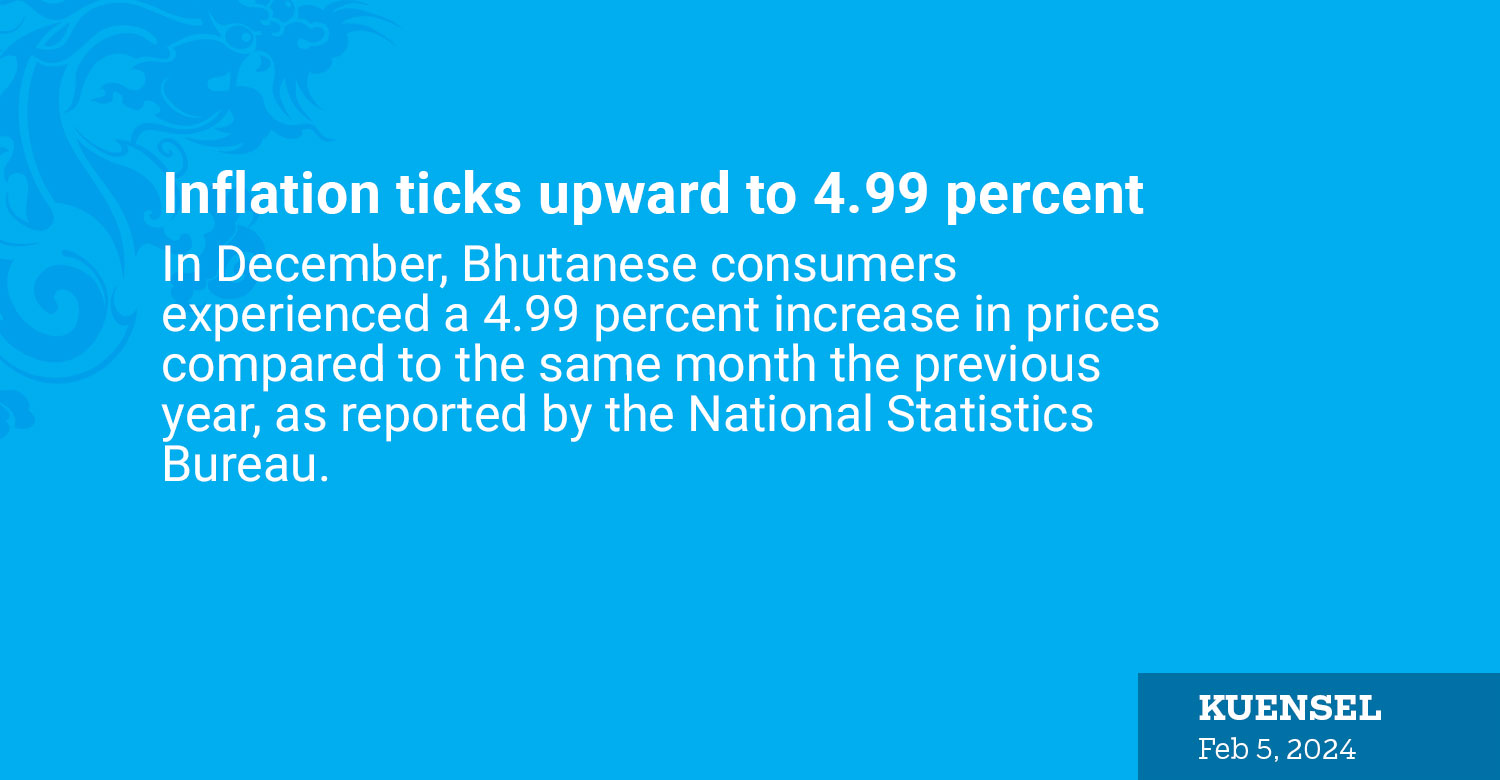Thukten Zangpo
In December, Bhutanese consumers experienced a 4.99 percent increase in prices compared to the same month the previous year, as reported by the National Statistics Bureau.
This rise in inflation means households are now spending 4.99 percent more on the same goods as a year ago. Looking at a month-over-month basis, the inflation rate saw a 0.41 percent increase from previous November month.
Suppose, a litre of oil that cost Nu 100 in December 2022 cost Nu 104.99 in December last year.
Despite the inflation staying below the Royal Monetary Authority’s upper threshold of 6 percent, it surpasses the pre-pandemic level of 2.34 percent in November 2019. This has tangible effects on individuals’ purchasing power.
To put it in perspective, the value of Nu 100 in December last year is now worth only Nu 56.4 percent in December 2012.
Last year saw inflation at its lowest in March, recording 3.12 percent, but it rose to 5.07 percent in October, marking an eight-month consecutive year-on-year increase. In November of the same year, inflation fell to 4.6 percent.
The economic theory stated that the inflation rate is determined by the supply and demand for money. For instance, if the money supply increases by 4 percent per year while money demand rises by 2 percent, inflation will be 2 percent. In simpler terms, inflation occurs when the supply of money grows faster than the demand to hold it.
The recent inflationary trend is driven by increases in both food and non-food prices, standing at 6.21 percent and 3.96 percent, respectively.
Notably, except for transport and communication, the prices of goods and services have witnessed an overall increase.
Transportation prices decreased by 1.34 percent, and communication prices by 2.86 percent.
Conversely, food and non-alcoholic beverages increased by 6.22 percent, and alcoholic beverages and betel nuts by 5.99 percent.
In the non-food category, health witnessed a highest jump by 13.47 percent, followed by housing and utilities, which rose by 9.41 percent.
Additionally, prices of clothing and footwear increased by 7.03 percent, restaurants and hotels, and furnishings and household equipment prices by 4.95 percent and 4.7 percent, respectively. Education rose by 2.44 percent, while transport decreased by 1.34 percent.
Comparing inflation from 2022 to 2023, the prices of goods and services increased by 4.23 percent, marking a drop of 1.41 percentage points compared to the 5.64 percent increase in 2022.
In 2023, health recorded the highest increase at 12.47 percent, while transport saw the lowest increase at 0.85 percent.
Given that over 80 percent of Bhutan’s imports come from India, Bhutan’s inflation closely tracks inflation in India. Therefore, any fluctuations in Indian inflation directly impact the consumption basket of the country.
The Royal Monetary Authority anticipates inflation to increase to 5 to 6 percent in the fiscal year 2023-24.


